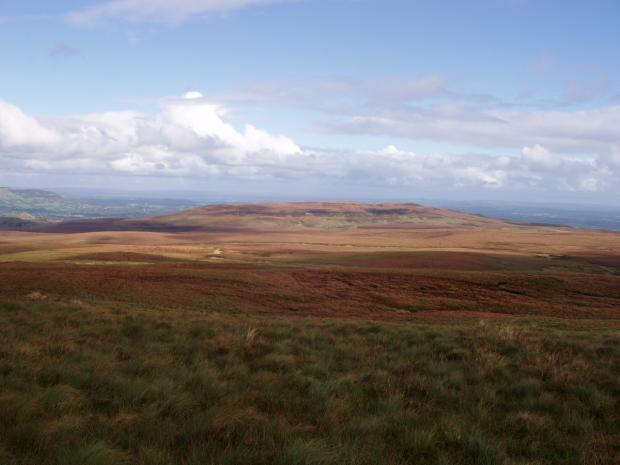
Cuilcagh mountain is of Special Scientific Interest because of its geology, physiography (the study of physical features of the earth's surface) and peatland flora and fauna.It contains the second largest expanse of intact blanket bog in Northern Ireland.
The sites biological interest is largely associated with the blanket bog which covers the mountain slopes. This exhibits a wide range of characteristic vegetation and structural features, with well developed pool, hummock and lawn features, acid flushes and bog bursts. The summit also supports an area of Racomitrium heath, a scarce vegetation type in Northern Ireland.
A number of rare and notable plants have been recorded for the area, mainly from the steep, north facing scarp slope and boulderfield below the summit. They are mainly bryophytes and include the mosses Dicranodontium asperulum and Dicranum scottianum, and the liverworts Herbertus aduncus ssp. hutchinsiae, Bazzania tricrenata, Anastrepta orcadensis, Marsupela sphacelata and Gymnomitrion crenulatum. Higher plants include dwarf willow, starry saxifrage, stiff sedge, green spleenwort, Tunbridge filmy fern, alpine clubmoss and stagshorn clubmoss.Cuilcagh mountain is also the most important upland breeding site for golden plover in Northern Ireland. Peregrine falcon regularly breed along the cliff faces and merlin are also frequently seen. The bog is occasionally used for feeding and roosting by Greenland white-fronted geese, and ring ouzel have been recorded for the area. The site also supports some notable species of aquatic invertebrate. These include several alpine species such as the water beetle Dytiscus lapponicus and the water boatman Glaenocorisa propinqua (both found in Lough Atona). The bog pools also support the whirligig beetle Gyrinus substriales.
The site's geological interest lies in the complete representation of the Carboniferous Leitrim Group. This includes rich fossiliferous sequences containing an outstanding range of goniatites] , brachiopods and other fauna. Landforms include a spectacular summit, Gritstone edge and pavement, rock slides and bog flows. A number of pseudo-karst (terrain with landforms (including caves) which resemble those of karst but are not the product of karst solution processes) features are also present and include collapsed dolines or sinks (natural enclosed depressions found in karst landscapes), pipes, peat caves and blind valleys.
Related articles
- ASSI Guidance for Public Bodies/Competent Authorities
- Coastal Areas of Special Scientific Interest
- Conservation Management Plans (CMPs)
- European Marine Sites - Marine Special Areas of Conservation and Special Protection Areas
- Introduction to Conservation Management Plans (CMPs) for Northern Ireland’s Special Areas of Conservation
- Marine Conservation Zones
- Marine Protected Areas
- Marine Ramsar sites
- Portrush Coastal Zone
- Special Areas of Conservation
- Special Areas of Conservation for Harbour porpoise
- Special Protection Areas
